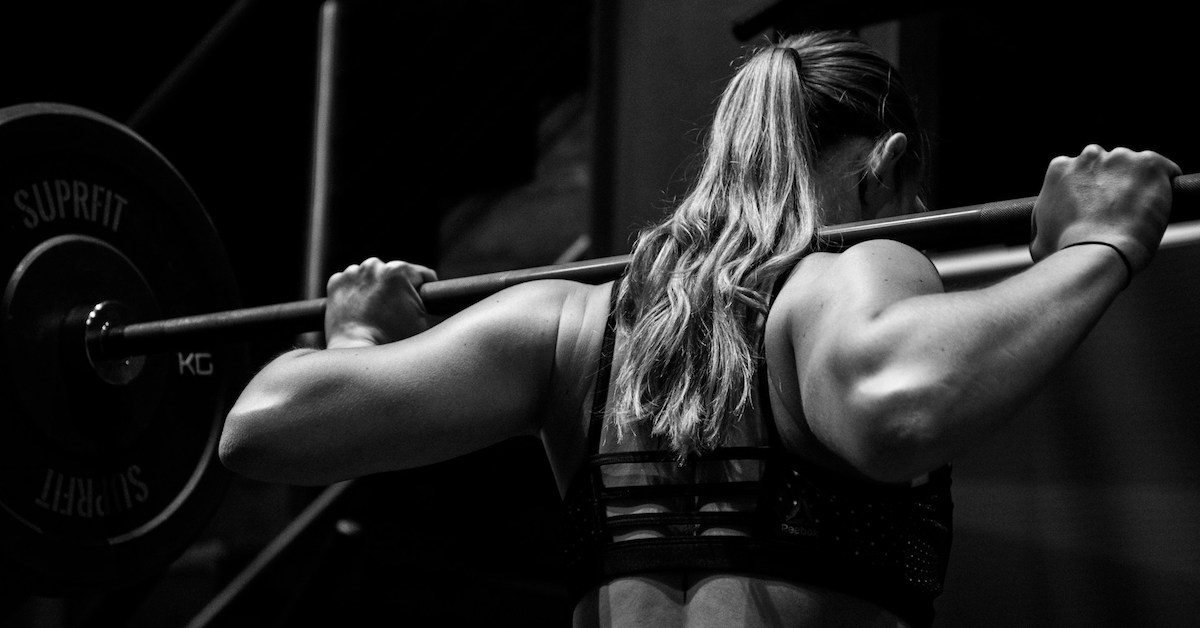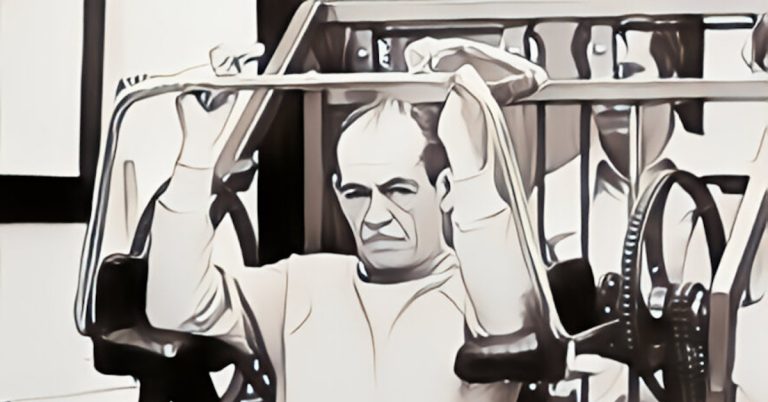In order to maximize your results when training for flexibility, certain rules exist. Here are the do’s and don’ts of stretching.
THE DO’S
DO use static stretching to maintain flexibility. Do I think that the classic Bob Anderson style of static stretching will make serious dents in your flexibility? Perhaps if it’s done multiple times a day, every day, for several weeks, but performed infrequently it will merely maintain your level of flexibility.
There are, however, some useful applications for occasional static stretching. For instance, scapular depression will encourage activation of the lats when rowing. If your upper traps are tonic (tight) and you tend to shrug when you row, use static stretching to temporarily weaken those fibers. This will help you perform the movement in a more biomechanically sound manner.
You can also use this advice to soften hypertonic (“too tight”) muscles to reduce the discomfort of deep massage or trigger point work. Use stretching after any soft tissue work to reestablish a new range of motion (ROM) and separate layers of the muscle that have been adhered.
DO couple stretching of tight muscles with training of favorite or strong body parts. For instance, if your chest is strong and your calves are tight (a common scenario), stretch your calves between sets of bench presses.
DO use traction to liberate greater ROM and reduce compression or impingement of a joint. Where appropriate use a lumbrical grip, not your shoulder for greater control. For example, grip the subject’s ankle during a supine hamstring stretch and “manipulate” the limb to exploit different planes of motion.
DO control which area of the muscle is being stretched. Let’s take a hamstring stretch again for example. Bending the knee, rounding the back, and/or plantarflexion of the ankle (i.e., pointing the foot away) will target the muscle belly, while knee locked, back straight, and/or dorsiflexion of the ankle (i.e., flexing the foot towards the shin) hits the fascia.
Well, what happens if you contract the hams as you stretch? You then direct the stretch toward the tendon. The question, though, is why would you want to do this? Not only could you possibly increase tendon slack, which will decrease speed and power, but the reality is that tendons are stronger than steel ounce for ounce, so good luck trying! You should never attempt to stretch tendons or ligaments. They can tear if stretched beyond 6% of their normal length.
DO stretch if you have poor posture. Adaptive shortening is the result of poor posture or training in a limited ROM. Here are some examples:
a) Wearing high heels causes shortening of the calves.
b) Look at your fingers. They’re always in flexion from typing, writing, eating, driving, training, etc.
c) The hip flexors are considered the most tonic muscle in the human body and let’s face it, we spend up to 40% of our lives sitting!
DO stretch the spinal column between sets of compressive exercises, such as squats and overhead presses. It is not unusual for someone to lose 20-40 mm of height following a weight training session. Hanging from a chin-up bar with the knees lifted can help a great deal with spinal decompression.
DO scan the body for tight muscles, then attack those fibers with stretching. Always stretch tight muscles first as they will inhibit the ROM of adjunctive muscles. Use general movement of all body parts to scan for tightness. Once found, use the appropriate stretching techniques to release it.
DO favor closed-chain over open-chain stretches. How do most people stretch their hamstrings? They throw their heel up onto a step or bench and lean forward reaching for their toes. This represents an open-chain stretch. Well, research shows that a closed-chain stretch which reflects the stance phase of gait increases hamstring flexibility to a much greater degree than an open-chain stretch which reflects the swing phase of gait.
To go one step further, toe-touching stretches in standing and seated positions are actually different procedures to your nervous system. Any form of stretching which exerts pressure on the soles of the feet or the palms of the hands will produce a
DO watch your athletes stretch if you are a trainer or a coach. Athletes will instinctively spend more time on tight muscles. This is a dead giveaway that they are experiencing problems.
DO use stretching as a diagnostic to test for possible impingement on spinal nerves. Straight leg raising, for instance, can test for sciatic nerve irritation as outlined in the text Modern Principles of Athletic Training by Daniel Arnheim.
Straight leg raising (affected side): With the athlete lying flat on the table, the leg on the affected side is lifted by the heel as far as possible. If the test is positive, the athlete feels pain radiating down the leg as well as in the low back region. To confirm that pain stems from a nerve root involvement and not hamstring tightness, the leg is lowered to a point at which pain ceases. In this position the foot is then dorsiflexed and the neck flexed. If pain returns, it’s a verification of a pathological condition of the nerve root.
Straight leg raising (unaffected side): The examiner raises the athlete’s unaffected leg. If pain occurs in the low back on the affected side as well as radiating along the sciatic nerve, this provides additional proof of nerve root inflammation.
DO use manual stretches when necessary. For instance, if you experience winging of the inferior border of the scapula (in other words, the lower part of your shoulder blade sticks out), it often indicates a tight pec minor. Raising your arm above your head as generally recommended is an ineffective way to stretch the pec minor, but a great way to stretch the latissimus dorsi. In order to effectively stretch the pec minor, you’ll require assistance from a competent practitioner.
DO use gentle motion for rehabilitation but don’t push the end range. For instance, the popular “mad cat” and “camel” stretches are useful for neural flossing of the spine (by getting nerves to move, they can create their own space), and PNF patterns (not to be confused with PNF stretching which is only a subset of the PNF discipline) are quite effective for shoulder and hip joint rehabilitation.
DO stretch surrounding muscles to liberate greater ROM. For instance, the iliotibial (IT) band is a dense, fibrous band of connective tissue that is very resistant to stretch and for obvious reasons. If you think you’re going to stretch it by simply bending your leg or your torso, good luck!
To really get at this
DO use a variety of stretching methods. As outlined in his book Science and Practice of Strength Training, Vladimir Zatsiorsky lists three methods to improve strength: maximal, dynamic, and repeated efforts. Well, weight training does not only improve strength
Along the same lines of the above model, authors Jürgen Hartmann and Harold Tünnemann have outlined three methods of stretching in their book Fitness and Strength Training for All Sports: repetition (dynamic or ballistic), endurance (static), and pre-tension (often referred as proprioceptive neuromuscular facilitation or PNF stretching). According to Hartmann & Tünnemann, PNF is the most effective and all stretching should be performed after your training session.
Therefore, a variety of stretching methods should be employed. As sports scientist Dr. Mel Siff once said, “Favor not one single method of stretching but combinations of them at the right time!”
THE DON’TS
DON’T stretch for longer than 15 seconds due to hypoxia of muscles. This hypoxia, or lack of oxygen to the muscles, will occur under a high degree of force/tension and can develop connective tissue, which decreases strength and may actually promote inflexibility. It’s better to use many different angles for a short duration with static stretching rather than holding one angle for a long period of time. The rule is that the more intensive the stretching, the shorter its application.
DON’T waste your time with excessive static stretching to increase flexibility. If you really think it’s making a difference in your ROM, research shows otherwise. According to Peter Magnusson (1996) and his team from Denmark, “The increased range of motion achieved from training is a consequence of increased stretch tolerance on the part of the subject rather than a change in the mechanical or viscoelastic properties of the muscle.”
Also, Magnusson states that daily stretching will not affect stiffness resulting from strength training. However, the passive stretching you experience from strength training will cause a physical increase in flexibility assuming, of course, that you train in full ROM. Favor stretch-position exercises like the ones listed below:
Hamstrings: Semi-Stiff-Leg Deadlift or Good Morning
Pectorals: Lying Dumbbell Flye
Triceps: Seated Overhead Triceps Extension (also known as a French Press)
Biceps: Incline Dumbbell Curl
Latissimus Dorsi: Lying Dumbbell Pullover
Midback: Seated Cable Row
Abdominals: Swiss Ball Crunch
Deltoids: One-Arm Cable Lateral Raise
Gastrocnemius: Standing Calf Raise
Soleus: Seated Calf Raise
Incidentally, any muscle with a greater absolute ROM (which the exercises above will promote) will have a greater capacity to grow.
DON’T stretch first thing in the morning, especially if you have a low back injury. Wait at least one hour after awakening. While you sleep your spine swells with fluid and the risk of injury is heightened.
DON’T come out of a stretch the same way you came in. You don’t want to negate the stretch by contracting the muscle. Use a different pathway out. I learned this valuable lesson from Ann and Chris Frederick who’ve developed a system of movement patterns from their background in dance.
DON’T static stretch the muscles you’re about to train! As I discuss in my Warm-Up to Strength Training DVD, this practice tends to sedate the muscles, and research shows that it will decrease strength and power. Also, static stretching prior to activity may actually cause injuries, not prevent them. Although some exceptions apply, for the most part, perform static stretching after activity or exercise.
DON’T hold your breath during a stretch as this will tense your muscles and provide a sympathetic response. Instead, you need to relax and experience a parasympathetic response by exhaling longer than inhaling. Keep in mind that the opposite (i.e., hyperventilation) will excite the system. Something to consider if you ever start to doze off behind the wheel!
DON’T believe the myth that weight training will make you inflexible! John Grimek, a weightlifter and world-champion bodybuilder in the 1930s and 1940s, would perform backflips and splits during his posing routines, and Tom Platz, a world champion bodybuilder from the 1970s and 1980s, also displayed extraordinary flexibility considering that he had arguably the best-built legs in all of bodybuilding. Platz would perform full, deep squats in training and he was notorious for being able to not only touch his toes, but kiss his knees!
Weight training will improve flexibility if you balance agonists and antagonists, and train in full ROM. In fact, full ROM exercise tends to increase both active and passive flexibility. Flexibility is at least average or above in strength athletes (i.e., throwers, weightlifters, gymnasts, and wrestlers). Furthermore, weightlifters can often squat deeper than other athletes, dispelling the myth that strength training and large muscles decrease flexibility.
DON’T stretch if you’re already very flexible. What’s the point? If you want to relax, try a warm bath and some classical music. There is an inverse relationship between mobility and stability. Being extremely stiff is one thing, but going too far to the other extreme can promote joint laxity and is also not desirable. Optimal, not maximal, static and dynamic flexibility is required for each joint.
There’s a time and place for everything and stretching is no exception. Follow the rules above to get the most for your stretching effort.
View an online video presentation of all the stretching methods mentioned in this article, and pick up my book Stretch for Strength for the latest techniques on how to increase muscle strength and size through stretching.
![Stretch for Strength [Video Presentation]](https://theelitetrainer.com/wp-content/uploads/2019/03/Stretch-for-Strength-Video-and-Slide-Presentation.jpg)
Stretch for Strength [Video Presentation]
Stretching isn’t just about flexibility—it can directly improve strength, performance, and resilience when done correctly. In this 104-minute video presentation, John Paul Catanzaro delivers one of the most comprehensive and practical explorations of stretching ever compiled. Includes a 101-page PDF slide deck with references.

Stretching Smarter: The Do’s and Don’ts for Maximum Flexibility
By JP CatanzaroOriginally published: September 23, 2014 – Updated for 2025 Want to boost flexibility, prevent injuries, and optimize performance?

Training Economy: How Weight Training Can Be Your All-in-One Fitness Solution
Recent research has once again confirmed what many in the weightlifting community already know: weight training isn’t just for building

4 Invaluable Lessons from Strength Training Pioneer Arthur Jones
Arthur Jones, a true visionary in the realm of strength training, left an unforgettable mark on the fitness industry with
follow
Error: No feed with the ID 2 found.
Please go to the Instagram Feed settings page to create a feed.
